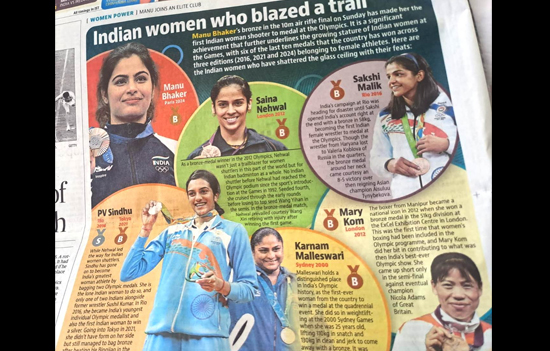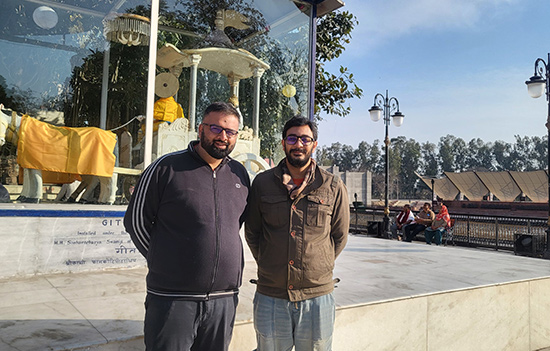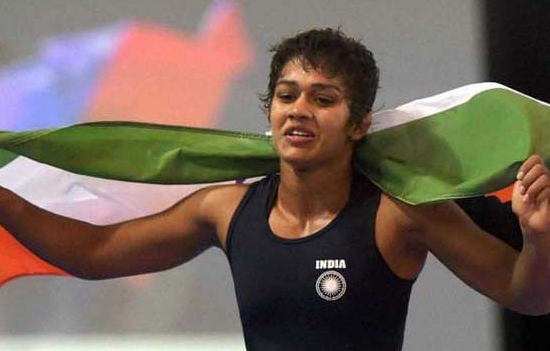- Long accused of having a hyper conservative social structure, Haryana’s women athletes have done Bharat proud, be it in shooting, wrestling or cricket. State governments, across parties, have supported sports in a big way too. Their stories are a testament to the transformative power of sports.
Haryana,
a state in northern India, has long been perceived through the lens of
traditional stereotypes. Accused OF a hyper conservative social structure,
where gender roles are supposed to be rigidly defined, perceptions of the state
create an image of patriarchal dominance and limited opportunities for women.
This is
a stark contrast to many other states where women are supposed to be in a much
better position, but end up producing few global champions. Barring a few
prominent exceptions like P V Sindhu and Jwala Gutta of Telangana, Deepika
Palikkal of Tamil Nadu, Anju Bobby George, Shiny Wilson and PT Usha of Kerala,
and Ashwini Nachappa, Joshna Chinappa and Ashwini Ponappa of Karnataka
(interestingly all Kodavas from Kodagu), the field seems to be almost entirely,
barring cricket and hockey, dominated by women from Haryana.
Achievements
of Haryana's women athletes in international sporting events including the
Olympics have challenged and redefined these long-held perceptions.
How is it that a conservative society consistently
produces global champions in a variety of sports?
There
are several layers to the answer, and definitely merit a detailed answer.
The Rise of Haryana's Women Athletes Is Not Exactly Recent
Many
would be surprised when I point out that the first woman athlete to win an
Olympic medal for India was from Haryana.
Jog
your memory, and you might recall that Karnam
Malleswari, the weightlifter who saved India the blushes in the 2000
Sydney Olympics with her bronze medal, is a bahu of Haryana. The Srikakulam born weightlifter who is married to Rajesh Tyagi, was recognised for her achievement when an award of ₹25 lakh was announced for her by the then Chief Minister of Haryana Mr. Om Prakash Chautala.
This
was a first of its kind announcement in the country in fact for women athletes
in general, as most of them had barely seen any state support across the
country, forget Haryana. While controversy has followed both of them, the seeds
for inspiration were in fact sowed in this very moment.
Over
the past few decades, Haryana has emerged as a powerhouse of sports in India,
so it is not entirely surprising that women achievers are also emerging in the
sports arena. Their journey from the fields of Haryana to the global stage of
the Olympics is a testament to their grit and determination. Life in Haryana
used to be tough, and with a largely rural and agrarian background in the past,
it is no surprise that women too were working in the fields and engaging in
daily rural life tasks.
These
activities lay the foundation for physical and mental resilience, where
toughness is respected irrespective of gender.
Wrestling
- One of the most notable figures in this transformation is Sakshi Malik, who made history by winning a bronze
medal in wrestling at the 2016 Rio Olympics. Her victory not only brought pride
to India but also highlighted the potential of women athletes from Haryana.
Sakshi's triumph was symbolic. It showcased that women, too, could excel in
sports traditionally dominated by men. Of course, this was in a series of
visible achievements of women wrestlers from the state. The Phogat sisters have won many medals, spurred by
the intense training that their father Mahabir Phogat ensured for them.
Cricket
- Here, the story of Shafali Verma also stands out. Today, right hand opening batsman of the Indian women’s cricket team, this girl from Rohtak struggled to get admission into a coaching academy because of her gender. Her father decided to cut her hair short, and a nine year old girl went to the academy to train along with boys, her real identity hidden. It was her father, a jewellery shop owner who could not pursue his own cricketing dream that empowered Shefali, who gave
her the much needed backing. As captain of the Under 19 women team, she led
India to victory in the inaugural T20 World Cup.
 Indian Women who blazed a trail. 3 are from Haryana. Courtesy HindustanTimes.
Indian Women who blazed a trail. 3 are from Haryana. Courtesy HindustanTimes.
Social Resilience of Haryana and the Cultural Impact
Their story, especially finding ways to train the sisters in a difficult environment, highlights something remarkable about Haryana’s society. That is the people are practical, solution oriented who recognise the need to provide a suitable nurturing environment to talent whenever spotted.
This even meant putting children’s talent over themselves, as one would see in the case of Savita Punia, the celebrated Indian
woman hockey player who was compelled to take hockey seriously when her father
bought a twenty thousand rupee hockey kit for her, an expense that came at much
personal cost.
Not to
be left behind are women making a mark at the Asian level in track and field
events for e.g. Seema Antil Punia is a
discus thrower who won medals at many a international competition, which laid
the seeds for someone like Neeraj Chopra to come through, as he would visit
these facilities and try working on the 400m race before picking up the javelin
to become a legend.
This
cultural trait in Haryanvis is also seen even in other geographies.
Saina Nehwal, the Olympic champion of badminton, also hails from a Haryanvi family. Similarly, we also have Manipur’s Mary Kom who mostly trained at Hisar in Haryana as part of the selection camp in 200. Her association with the state has made her a symbol of women's empowerment in the region. Her presence also triggered many a woman boxer’s emergence within the state from the famed mini Cuba of India, Bhiwani.
The children and their coaches today have seen the merit in sports, and will go to any length to seek exposure for improvement. This level of resilience is a rare trait to possess - sleeping on platforms of railway stations or living in ramshackle private ‘academies’ because it is in the hub of a sport that is producing champions away from home are not easy decisions.
And
yet, in a society that otherwise saw gender imbalance, this
practicality of the parents showed that there is so much to celebrate about the
state of Haryana, and the sharp improvement in gender ratio over the
past decade shows the determination of its people to set right what it feels is
wrong socially.
Another important factor that certainly
plays an influence is the impact of the spiritual moorings on the psyche of the
players.
Manu Bhaker’s mother, a retired principal, holds a masters’ degree in Sanskrit. Haryana is one of the few states that still produces a significant number of Sanskrit scholars, thanks to its celebration of its heritage as the land of Hari and the educational and spiritual influences of the Arya Samaj Movement. This led to access to spiritual learning that has greatly enhanced the spiritual leanings of the masses at large.
 At Jyotisar in Haryana. It is here that Sri Krishna recited the Holy Gita to Arjuna. Pic by author.
At Jyotisar in Haryana. It is here that Sri Krishna recited the Holy Gita to Arjuna. Pic by author.
It is
well known now that Manu Bhaker sought
refuge in the Srimad Bhagavad Gita when she was
struggling in the mind. Surely her mother had a role in understanding the
lessons of nishkaam karma that are
imbued in the grand text.
Many people also have strong belief in the Sanatani culture and have used it to augment their physical regimes alongside their spiritual pursuit.
For
instance, the famous inaugural T20 cricket World Cup winning team member
Joginder Sharma built stamina by undertaking the harsh kanwar yatra from Haridwar to offset the lack of finances for
training in a proper gym. International kabaddi star Abhisek Narwal still
undertakes the rigorous Dak kanwar regime as an expression of his devotion to
Lord Shiva. Today, many women athletic aspirants also undertake kanwar yatras
to build endurance and stamina like their male counterparts, as witnessed
across the traditional journey routes from Haridwar to various parts of
Haryana.
 Wrestler Babita Kumari
Wrestler Babita Kumari
The Role of Government and Institutions
The
case of Bhiwani in particular highlights a rather important feature of Haryana.
The role of the state government, irrespective of the political regime at helm,
created the infrastructure to encourage sports culture across the state.
Fitness
was an important feature for Haryana for more than two centuries, thanks to the
economic necessity of the armed forces being a source of pride and income for
the countless families of the state. However, the governments also recognised
the complimentary potential of sports as a means of empowerment, as Haryana
soldiers started to perform well in domestic and limited international sports
circuits as well.
Legends
like Captain Hawa Singh, who hailed from Bhiwani set the ball rolling, while in
other more conventional domains like cricket, Kapil Dev obtained legendary
status.
The
Haryana government has worked to implement various initiatives to support
athletes. Building facilities across sports levels from scratch and maintaining
them through financial support for maintenance and operational expenses has
ensured that facilities function. On the other side, the state has also thrown
open these facilities at nominal rates to all children, ensuring that no child
is left behind. Incentives are also available for medal winners at all levels,
including scholarships, training facilities, and financial incentives.
The
Haryana Sports and Physical Fitness Policy, introduced in 2015, worked to
create a conducive environment for sports in the state. The policy focused on
identifying talent at a young age and providing them with the necessary
infrastructure and support to excel. This proactive approach has played a
significant role in nurturing the talent of women athletes in the state.
Sports
academies and training centers in Haryana have also been instrumental in the
rise of women athletes.
Institutions
like the Chhotu Ram Stadium in Rohtak and the Sir Chhotu Ram Boxing Academy
have provided world-class training facilities and coaching. These centers have
become breeding grounds for champions, offering young athletes the opportunity
to hone their skills and compete at international levels.
A Broader Impact
The
impact of Haryana's women athletes extends beyond the realm of sports. Their
achievements are influencing other areas of society, including education and
employment. As role models, they are encouraging more girls to pursue education
and professional careers. Schools and colleges in Haryana are increasingly
promoting sports and extracurricular activities, recognizing their importance
in holistic development.
Furthermore,
the success of these athletes is fostering a sense of pride and unity in the
state. In a region often divided by caste and community lines, sports have
become a unifying force for the chhattees
baradari (36 communities). The victories of women athletes are celebrated
across Haryana, transcending social and economic barriers. This collective
pride is crucial for building a more inclusive and progressive society.
Conclusion
The
journey of Haryana's women athletes from the fields of their villages to the
Olympic podium is a powerful narrative of change and empowerment. Their
achievements are challenging long-held stereotypes and inspiring a new
generation of girls to dream big. As Haryana continues to support and nurture
its sporting talent, the state is not only producing world-class athletes but
also paving the way for a more equal and progressive society.
In the broader context, the success of these athletes is a reminder that talent and determination can transcend societal barriers.
Their
stories are a testament to the transformative power of sports and the potential
for change in even the most traditional societies. As Haryana's women athletes
continue to shine on the global stage, they are rewriting the narrative of
their state and setting new benchmarks for what is possible.
To read all
articles by author
Also read
1. Why Manipur excels
in sports and connect with local culture
2. Incredible Women
of Bharat
3. Nine Nights of
Women Power
4. Unsung Women
Warriors of India
5. Hockey captain Rani Rampal’s life story
6. Attitude of parents towards female sports in Haryana – A study
7. Haryana has the
best support system
8. Haryana’s women athletes best examples of women empowerment says President